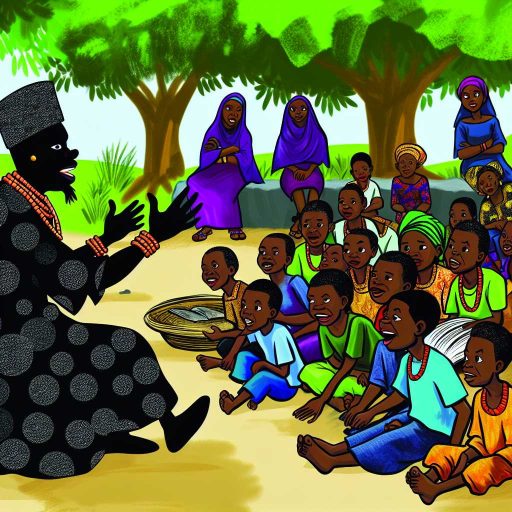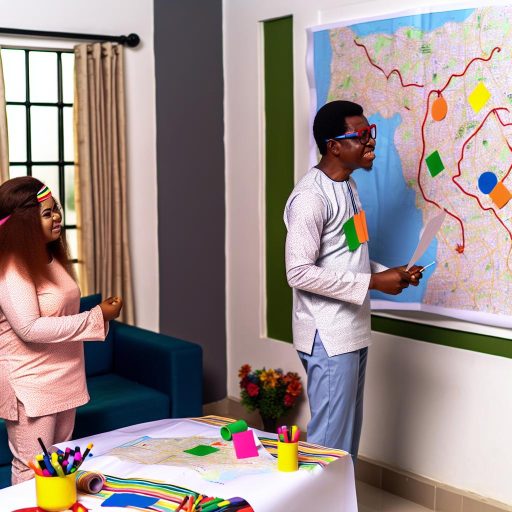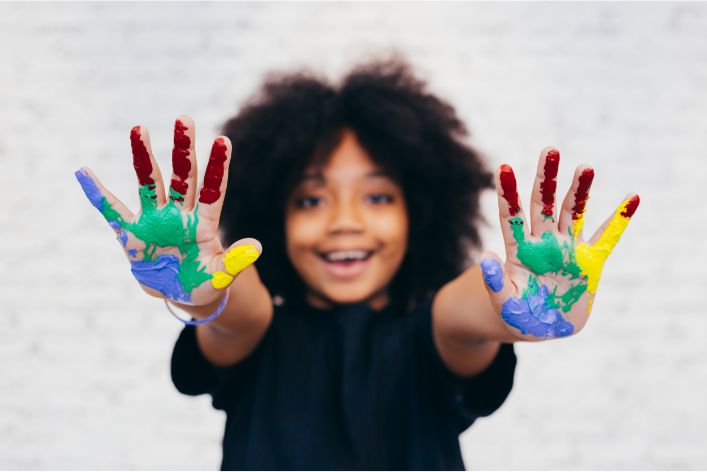Understanding the Importance of Creativity in Child Development
Creativity plays a pivotal role in child development.
It fosters critical thinking and problem-solving skills.
Additionally, creativity encourages emotional expression.
Furthermore, it promotes social skills through collaboration.
Enhancing Cognitive Abilities
Engaging in creative activities boosts cognitive function.
Children learn to think outside the box.
Moreover, they develop innovative solutions to challenges.
Emotional Growth and Expression
Creativity allows children to express their feelings.
This expression helps them process complex emotions.
Ultimately, it leads to emotional resilience.
Social Skills Development
Creative projects often require teamwork.
Collaborating with peers enhances communication skills.
Through group activities, children build strong relationships.
Building Confidence and Self-Esteem
Completing creative tasks instills a sense of achievement.
This success boosts a child’s confidence.
Parenting Made Just for You
Get personalized Parenting Solutions tailored to your child’s needs. Transform your parenting journey with expert guidance in 1-3 days.
Get StartedAs a result, they feel empowered to tackle new challenges.
Overview of DIY Projects and Their Benefits for Children
DIY projects spark creativity in children.
They encourage exploration and experimentation with materials.
Moreover, hands-on activities enhance problem-solving skills.
Children learn to express themselves through creative means.
Additionally, creating projects boosts confidence and self-esteem.
When children create, they take ownership of their work.
Engagement with Local Materials
Using local materials fosters environmental awareness.
Children discover the value of resources in their community.
This practice connects them to their surroundings.
Moreover, it promotes sustainability by reducing waste.
Working with local items makes projects feel more personal.
Collaboration and Social Skills
DIY projects often encourage teamwork among children.
Collaborating helps them develop communication skills.
Unveil the Perfect Name that Tells Your Family's Story
Let us help you find a name that embodies your family's values, traditions, and dreams. Our personalized consultation weaves cultural insights to create a name that's uniquely yours.
Get StartedThey learn to share ideas and compromise on solutions.
Ultimately, this interaction builds friendships and community.
Encouraging Independence and Critical Thinking
DIY projects promote independent thinking in children.
They must make choices and solve challenges during creation.
This process nurtures resilience and adaptability.
Furthermore, children learn to evaluate their work critically.
They gain valuable insights from both successes and failures.
Identifying Local Materials Suitable for DIY Projects in Nigeria
Understanding Local Resources
Nigeria is rich in diverse materials for DIY projects.
Locally sourced materials enhance creativity and sustainability.
Additionally, using local resources supports community development.
Popular Local Materials
Wood is widely available and versatile for various projects.
Coral stones can provide unique textures and aesthetics.
Clay is perfect for pottery and decorative items.
Recycled materials, such as plastic and metal, can also be innovative options.
Tile and Fabric Options
Nigerian fabrics like Ankara offer vibrant colors for upcycling.
Tiles from local artisans add distinct character to projects.
Moreover, these materials often reflect Nigeria’s rich culture.
Finding Local Suppliers
Local markets are great places to discover materials.
Connecting with artisans can yield unique resources and ideas.
Furthermore, online platforms may list local suppliers.
Benefits of Using Local Materials
Using local materials reduces transportation costs and emissions.
It encourages the preservation of traditional techniques.
Moreover, it strengthens local economies by supporting artisans.
Uncover the Details: Low-Cost, High-Impact Family Fun Ideas for Nigerian Households
Safety Considerations When Using Local Materials for DIY Projects
Assessing Material Safety
Always evaluate the safety of local materials before starting your project.
Research local wood types for potential toxicity.
Some materials may harbor pests that could affect your project.
Always check for contaminants like mold or harmful chemicals.
Incorporate a testing phase to ensure materials are safe.
Protective Gear
Wear appropriate protective gear while working with local materials.
Use gloves to protect your hands from splinters and chemicals.
Eye protection is essential when cutting or sanding materials.
A mask can prevent inhalation of dust and particles.
Ensure that your workspace is well-ventilated at all times.
Handling and Disposal
Learn proper handling techniques for various local materials.
Use safe lifting techniques to avoid injuries.
Always clean your workspace after completing a project.
Dispose of waste materials according to local regulations.
Consider recycling options for recyclable materials.
Emergency Preparedness
Prepare for emergencies by having a first-aid kit nearby.
Know how to respond to common injuries that may occur.
Familiarize yourself with emergency contact numbers.
Keep a fire extinguisher accessible if using flammable materials.
Regularly review safety procedures with anyone involved in the project.
Find Out More: Creative Outdoor Games for Nigerian Kids That Don’t Break the Bank
Simple DIY Project Ideas Using Common Nigerian Materials
Creating Bamboo Furniture
Bamboo is abundant and versatile for DIY projects.
You can craft chairs and tables using local bamboo.
First, gather the bamboo sticks and cut them to size.
Then, join the pieces with strong adhesive or twine.
Finish by sanding for a smooth surface.
Making Traditional Clay Pots
Clay is readily available in many Nigerian communities.
Start by collecting wet clay from local sources.
Mold the clay into desired shapes for pots.
Leave the pots to dry in the sun for a day.
Once dry, you can paint or decorate them.
Crafting Beaded Jewelry
Local materials such as seeds and beads are great for jewelry.
Start with a selection of colorful beads and threads.
Design your unique patterns for bracelets or necklaces.
Then, string the beads onto the thread.
Finally, secure the ends for a finished piece.
Building Simple Garden Planters
Repurposing wooden crates can create charming planters.
Begin by cleaning the crates and ensuring no splinters.
Add drainage holes at the bottom to avoid waterlogging.
Then, fill the crates with soil and your favorite plants.
Your garden will flourish with these creative planters.
Designing Woven Baskets
Woven baskets are functional and decorative.
Use local grasses or palm fronds for weaving.
Start by bending the materials into a circular shape.
Weave the strips together tightly for durability.
Finish by adding handles for easy carrying.
Constructing Simple Birdhouses
Birdhouses can attract wildlife to your garden.
Utilize leftover wooden scraps from previous projects.
Cut the wood into six panels for the birdhouse.
Join them together with nails or screws.
Consider painting the birdhouse for added charm.
Gain More Insights: Affordable and Creative Indoor Activities for Nigerian Families

Encouraging Problem-Solving and Critical Thinking through DIY Activities
The Importance of Creativity in Learning
Creativity enhances cognitive development in individuals of all ages.
It encourages out-of-the-box thinking and innovative solutions.
Moreover, creative activities can make learning enjoyable and engaging.
Benefits of DIY Projects
DIY projects foster critical thinking by requiring planning and execution.
Participants analyze materials and tools, assessing their suitability.
This hands-on experience encourages problem-solving in real-time.
Additionally, it helps develop fine motor skills and hand-eye coordination.
Utilizing Local Materials
Using local materials connects individuals to their community and environment.
It promotes sustainability and reduces costs associated with sourcing materials.
Furthermore, local materials often have unique characteristics, enhancing creativity.
Encouraging Collaboration and Communication
DIY projects often involve teamwork, inspiring collaboration among participants.
Working together allows individuals to share ideas and solutions.
This exchange of knowledge nurtures interpersonal skills and social interaction.
Steps to Get Started with DIY Projects
- Identify the local materials available in your area.
- Choose a project that interests you or your group.
- Plan the project, noting the necessary tools and steps.
- Begin the project, adjusting as necessary for challenges encountered.
- Reflect on the process and outcomes to enhance future projects.
The Lasting Impact of DIY Creativity
Engaging in DIY projects can profoundly influence personal growth.
These experiences foster a mindset open to exploration and learning.
Ultimately, the skills and insights gained will benefit participants long-term.
Uncover the Details: Fun and Educational Activities for Nigerian Families
Incorporating Cultural Elements into DIY Projects to Enhance Learning
Understanding Local Materials
Local materials add authenticity and richness to DIY projects.
Using them fosters a connection to community and heritage.
Moreover, these materials often carry unique historical significance.
Choosing Culturally Relevant Projects
Select projects that resonate with your cultural background.
For example, crafting traditional crafts can revive interest in the culture.
Additionally, these projects promote skills that are often passed down through generations.
Engaging with Local Artisans
Partnering with local artisans can enhance the learning experience.
Their expertise provides valuable insights into cultural techniques.
Furthermore, it encourages community collaboration and networking.
Encouraging Reflection and Discussion
Incorporating reflection periods into projects can deepen understanding.
Encourage participants to discuss their experiences and insights.
This practice fosters a sense of belonging and shared learning.
Celebrating Cultural Events
Organize DIY workshops during local cultural festivals.
These events create opportunities to engage with broader audiences.
Moreover, this approach highlights the importance of cultural preservation.
Showcasing Completed Projects
Exhibit finished projects to celebrate participants’ achievements.
This can inspire others to explore their creativity through local materials.
Additionally, it strengthens community pride and cultural appreciation.
Tips for Parents to Support Children’s DIY Creativity
Foster an Encouraging Environment
Begin by creating a dedicated space for DIY projects.
This area should be safe and equipped with necessary materials.
Encourage your children to express their ideas freely.
Let them know all their creative efforts are valued.
Incorporate Local Materials
Introduce your children to local materials for their projects.
Visit nearby parks or markets to gather supplies together.
Discuss the benefits of using sustainable and local resources.
This activity also teaches them about their community.
Set Realistic Projects
Select projects that match your children’s skill levels.
Start with simple crafts and gradually increase the complexity.
Breakdown larger projects into smaller, achievable tasks.
Celebrate each completed task to build their confidence.
Encourage Collaboration
Invite friends or family to join in on DIY projects.
This collaboration fosters teamwork and shared creativity.
Allow children to bounce ideas off each other.
Group work helps them learn from different perspectives.
Provide Guidance, Not Instructions
Instead of giving direct instructions, ask guiding questions.
Encourage problem-solving and critical thinking in each project.
This approach promotes independence in creative expression.
Be available to offer help, but allow them to lead.
Showcase Their Work
Display completed projects around the home.
Create a gallery wall to highlight their creativity.
Take photographs of their work and share them with family.
Encouragement through visibility boosts their motivation.
Additional Resources
Design Amazing Social Media Graphics and Content with Canva
Low-Cost, High-Impact Family Fun Ideas for Nigerian Households




